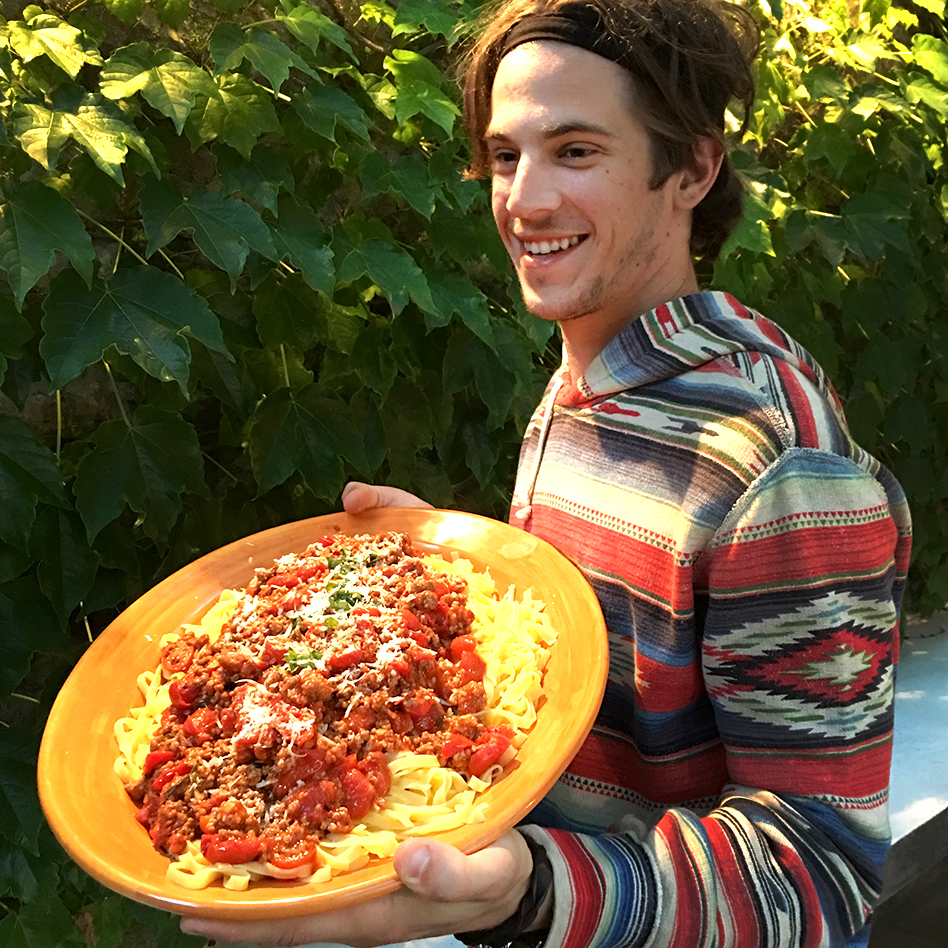There is no other way of putting it – This past week, I had a bucket list day. This is how it went:
After a week and a half in Osso's production facility, I was moved on Tuesday to the kitchen to work with the saucier, William. I noticed a lot of people call him Gordito, which I didn't like. I asked if he would mind if I called him "Willie." Willie is Renzo's guy charged with making sauces, seasonings, and chicharrones. Together, we started cooking up massive pots of BBQ sauce, antichucero sauce, and ají asado.
The beginnings of Osso's BBQ Salsa.
Animal Sauce - what your hamburger has been missing!
As thrilled as I was about leaving production to learn something new from Willie, I was even more thrilled to learn Renzo was waiting for me in front of the shop around mid-morning - we were going to the downtown San Isidro location!
It’s a decent trip to San Isidro, mostly due to traffic. Lima has some ridiculous traffic and some of the most aggressive drivers I’ve ever seen, but that day it didn’t matter. I had a solid two and a half hours, one-on-one with one of my idols. I had Renzo Girabaldi trapped in a car, and we talked about all the important stuff in life... like golf and meat.
I'll be honest - I didn't get any photos of us in the car. I was too busy asking questions! Here is one of the older pieces in the dry-aging room from the San Isidro location.
Renzo was just back from an exhaustive trip to Russia and used the previous weekend to catch up on a little R&R out on the links. He was in need of some serious golf therapy. As Renzo described one of his rounds, I found myself missing the game. I haven’t picked up a club in the last three years - not since I started this crazy butcher adventure. About that time, Renzo said, “The club president cleared you to play – WE are playing with him next week.”
Pinch me - are you kidding me? I'm in a car with Renzo Girabaldi, and I'm going to play golf with him next week! How do you say, "Bucket List!"
I didn’t waste the opportunity - I had Renzo one-on-one, and I had a thousand meat questions I wanted to ask. For a guy who eventually wants to open his own shop, this time with Renzo was priceless.
I gave him the general premise of my future endeavor, and he helped me focus and peel back the onion. The location has always been a big question mark for me. It is still a question, but after Tuesday, perhaps I have honed it down.
We talked Dan Barber, Dario Cecchini, David Chang. We talked costing, machinery, and utilities. You know, the boring stuff you don't want to read or hear about, but I ate up every single word.
Remember, when I started this carnivorous journey, I said that I wanted to work for Dario Cecchini, Renzo Girabaldi, and Francis Mallman. I've been working towards this for almost three years - a lot of hard, manual, and often free labor. And every ounce of sweat and blood that I've shed is worth it because of days like this past Tuesday.
Renzo Girabaldi, check.
Lamb chops and figs - a little special treat cooked up for Renzo and I.
The main grilling station at Osso San Isidro - in crunch time, that have plenty of space to crank out some serious meat.
Lamb saddle chops that I was charged with cooking. Renzo calls them "Batman" chops - I think that is the better name!



















































